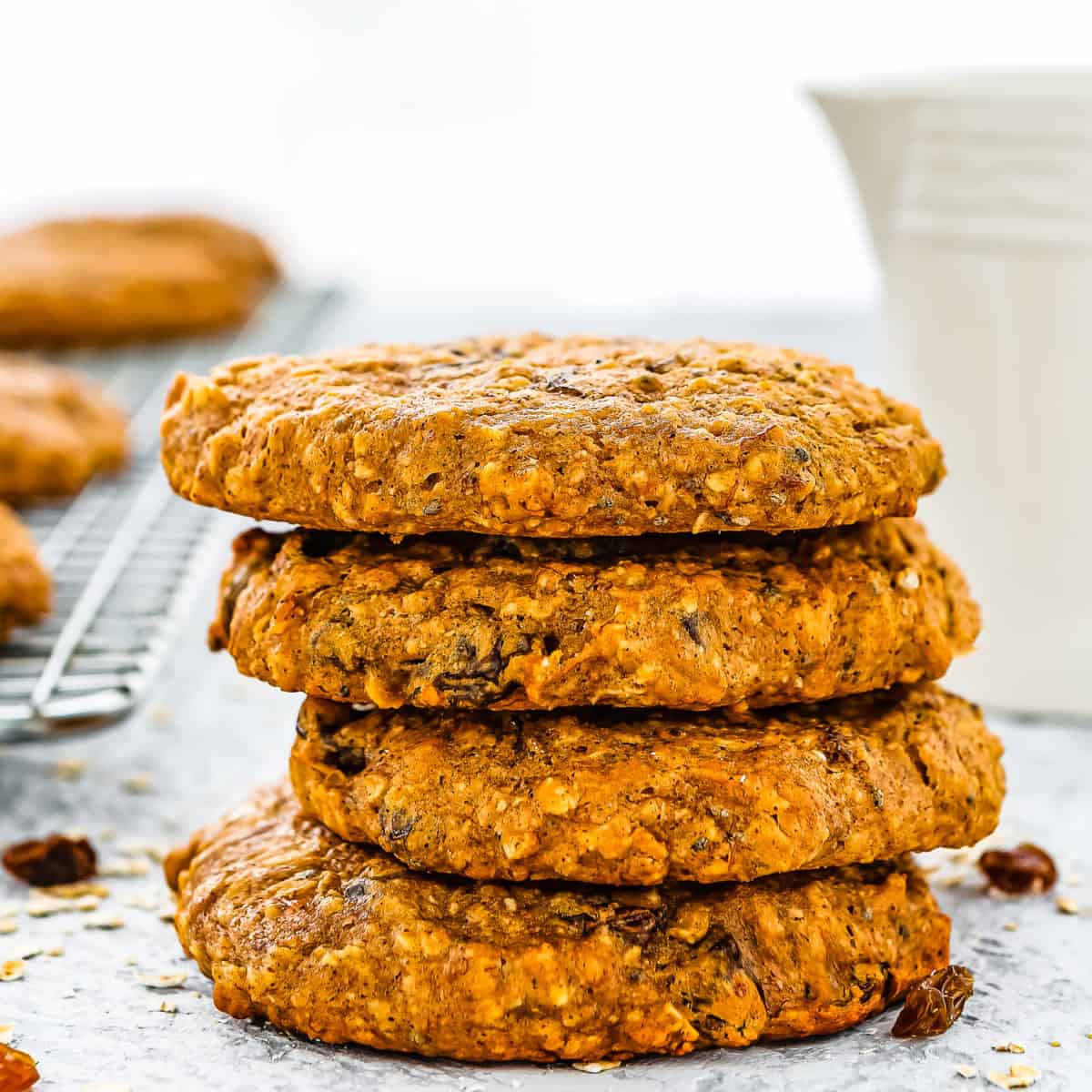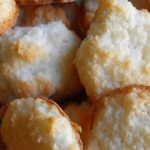Sunrise greets a world of delicious breakfast possibilities, but for those with dairy and egg allergies, the morning meal can feel limited. This guide flips the script, transforming breakfast classics into allergy-friendly delights. Prepare to embark on a culinary journey filled with vibrant, nutritious, and incredibly tasty alternatives, proving that ditching dairy and eggs doesn’t mean sacrificing flavor or satisfaction. We’ll explore creative substitutions, master recipe adaptation techniques, and conquer cross-contamination concerns, ensuring every bite is both safe and scrumptious.
From fluffy pancakes to hearty muffins, we’ll unveil a treasure trove of dairy-free and egg-free recipes, accompanied by insightful nutritional comparisons and practical tips for navigating various dietary needs. Learn how to effortlessly adapt your favorite recipes, create a diverse weekly breakfast menu, and confidently prepare allergy-safe meals that delight the whole family.
Recipe Adaptation Techniques
Transforming beloved breakfast recipes into dairy-free and egg-free delights requires a thoughtful approach to ingredient substitution. This involves understanding the roles of dairy and eggs in traditional recipes and finding suitable replacements that mimic their functionalities. Success lies in carefully considering binding, leavening, and texture, ensuring the final product maintains its appeal and deliciousness.
Dairy-Free and Egg-Free Substitutions
Dairy and eggs contribute several crucial elements to baking: richness, binding, leavening, and emulsification. Replacing them necessitates understanding these roles and employing appropriate substitutes. For binding, flaxseed meal (1 tablespoon flaxseed meal mixed with 3 tablespoons water equals one egg) or applesauce often work well. For leavening, baking powder and baking soda remain staples, but their effectiveness can be enhanced with the addition of vinegar or lemon juice, which react with the baking soda to create lift. Creamy textures are achieved through the use of ingredients like silken tofu, cashew cream, or plant-based yogurt, each offering unique textural qualities.
Creating Creamy Textures in Dairy-Free Alternatives
Several plant-based ingredients can effectively mimic the creamy texture provided by dairy in traditional breakfast recipes. Silken tofu, with its smooth and almost custard-like consistency, blends seamlessly into batters and adds moisture. Cashew cream, made by soaking cashews in hot water until soft and then blending them until smooth and creamy, offers a rich and decadent texture. Plant-based yogurts, particularly those with a higher fat content, provide a tangy and creamy element, similar to traditional yogurt. The choice depends on the desired flavor profile and texture; silken tofu tends to be milder, cashew cream richer, and plant-based yogurt tangier.
Dairy-Free and Egg-Free Pancakes
Pancakes often rely on eggs for binding and dairy for richness. Here’s a recipe that achieves both without them:
- Combine 1 ½ cups all-purpose flour, 2 tablespoons sugar, 2 teaspoons baking powder, ½ teaspoon baking soda, and ½ teaspoon salt in a large bowl.
- In a separate bowl, whisk together 1 ½ cups plant-based milk (almond, soy, or oat work well), 2 tablespoons melted coconut oil, 1 tablespoon apple cider vinegar, and 1 teaspoon vanilla extract.
- Gently pour the wet ingredients into the dry ingredients and whisk until just combined. Do not overmix.
- Heat a lightly oiled griddle or frying pan over medium heat.
- Pour ¼ cup of batter onto the hot griddle for each pancake.
- Cook for 2-3 minutes per side, or until golden brown and cooked through.
- Serve with your favorite dairy-free toppings, such as fresh fruit, maple syrup, or coconut whipped cream.
Dairy-Free and Egg-Free Waffles
Waffles benefit from the richness of dairy and the binding properties of eggs. This recipe uses silken tofu for both:
- In a blender, combine 1 cup silken tofu, 1 cup plant-based milk, 2 tablespoons melted coconut oil, 1 tablespoon maple syrup, and 1 teaspoon vanilla extract. Blend until completely smooth.
- In a separate bowl, whisk together 1 ½ cups all-purpose flour, 2 teaspoons baking powder, ½ teaspoon baking soda, and ½ teaspoon salt.
- Gently pour the wet ingredients into the dry ingredients and whisk until just combined. Do not overmix.
- Heat a waffle iron according to manufacturer’s instructions.
- Pour the batter onto the hot waffle iron and cook until golden brown and crispy.
- Serve with your favorite dairy-free toppings.
Dairy-Free and Egg-Free Banana Muffins
These muffins use mashed banana for both sweetness and binding:
- Preheat oven to 375°F (190°C). Line a muffin tin with paper liners.
- In a large bowl, mash 2 ripe bananas until smooth. Add ½ cup plant-based milk, ¼ cup melted coconut oil, and 1 teaspoon vanilla extract. Mix well.
- In a separate bowl, whisk together 1 ½ cups all-purpose flour, ½ cup sugar, 1 teaspoon baking soda, ½ teaspoon baking powder, and ½ teaspoon salt.
- Gently fold the dry ingredients into the wet ingredients until just combined. Do not overmix.
- Fill the muffin liners about ¾ full.
- Bake for 18-20 minutes, or until a toothpick inserted into the center comes out clean.
- Let cool in the muffin tin for a few minutes before transferring to a wire rack to cool completely.
Addressing Common Allergen Cross-Contamination Concerns

Preventing cross-contamination is paramount when preparing dairy-free and egg-free meals for individuals with allergies. Even trace amounts of allergens can trigger severe reactions, making meticulous kitchen practices essential for ensuring the safety and well-being of those with dietary restrictions. The goal is to create a completely allergen-free environment during food preparation.
Cross-contamination occurs when allergens transfer from one food or surface to another. This can happen through direct contact, airborne particles, or the use of shared utensils and equipment. Imagine a tiny speck of egg clinging to a spatula used to stir a dairy-free pancake batter; this seemingly insignificant detail could cause a serious allergic reaction. Thorough cleaning and dedicated equipment are key to mitigating these risks.
Kitchen Checklist for Minimizing Cross-Contamination
Careful planning and a systematic approach are vital in preventing cross-contamination. The following checklist Artikels key steps to ensure a safe and allergen-free cooking environment.
- Designated Preparation Areas: Designate separate areas for preparing allergen-free foods and foods containing allergens. This could involve using different countertops, cutting boards, and even different sets of cookware.
- Thorough Cleaning: Wash all surfaces, utensils, and equipment with hot, soapy water after each use. Pay close attention to crevices and hard-to-reach areas. A thorough rinsing is crucial to eliminate any lingering allergen residue.
- Dedicated Utensils and Equipment: Use separate cutting boards, knives, spoons, whisks, and other tools specifically for allergen-free foods. Clearly label these items to avoid accidental mixing.
- Airborne Allergen Control: When working with allergenic ingredients like eggs or dairy, minimize airborne particles by using a vented hood or working in a well-ventilated area. Cover ingredients when possible to reduce the risk of spreading allergens through the air.
- Careful Ingredient Handling: Handle allergen-containing foods with care to avoid accidental spills or splashes. If a spill occurs, clean it up immediately and thoroughly.
- Labeling and Storage: Clearly label all containers of allergen-free foods to prevent accidental mixing. Store allergen-free foods separately from foods containing allergens to avoid cross-contamination during storage.
Kitchen Tools and Equipment for Preventing Cross-Contamination
Investing in specific kitchen tools can significantly reduce the risk of cross-contamination. These tools help maintain a clean and allergen-free workspace.
- Separate Cutting Boards: Use different colored cutting boards for different food groups, such as a red board for raw meat, a green board for vegetables, and a blue board for allergen-free ingredients. This visual cue helps prevent accidental mixing.
- Dedicated Cookware: Having separate pots, pans, and baking dishes for allergen-free foods prevents residual allergens from contaminating subsequent preparations. Stainless steel or non-stick cookware is easy to clean.
- Silicone Utensils: Silicone utensils are heat-resistant, easy to clean, and don’t harbor bacteria as easily as wooden or porous utensils. Their smooth surface makes cleaning a breeze.
- Food Processors and Blenders: If using these appliances for allergen-free foods, thoroughly clean them after each use. Disassemble the appliance for a more comprehensive cleaning, ensuring no residue remains.
Exploring Different Dietary Needs Beyond Dairy and Eggs
Creating truly inclusive and allergy-safe breakfasts requires considering a wider range of dietary needs beyond dairy and egg avoidance. Many individuals face challenges with various other common allergens and intolerances, significantly impacting their breakfast options. This section will explore some of these, offering practical solutions and adaptable recipes.
Many individuals follow various diets to manage health conditions or personal preferences. Understanding these and how to adapt recipes accordingly is crucial for creating delicious and inclusive breakfasts for everyone.
Gluten-Free, Dairy-Free, and Nut-Free Pancake Adaptation
Adapting a classic pancake recipe to be gluten-free, dairy-free, and nut-free requires careful ingredient selection. Traditional recipes rely heavily on wheat flour, dairy milk, and often incorporate nuts for added flavor or texture. However, with thoughtful substitutions, a delicious and safe pancake can be created for individuals with multiple sensitivities.
A typical pancake recipe might call for all-purpose flour, milk, eggs, and butter. To adapt this, we replace all-purpose flour with a gluten-free blend (containing a mix of rice flour, tapioca starch, and/or almond flour – always check for nut-free certification if necessary). Dairy milk is easily swapped for a plant-based alternative such as almond milk (ensure it’s nut-free if required), soy milk (if soy isn’t a concern), or oat milk. The eggs can be replaced with a flax egg (one tablespoon of ground flaxseed meal mixed with three tablespoons of water) or applesauce, which adds moisture and binding. Finally, any butter can be substituted with a dairy-free butter alternative, or simply omitted. The resulting pancakes, while different in texture from traditional ones, will still be light, fluffy, and flavorful. Imagine a stack of golden-brown pancakes, subtly sweet and tender, a testament to the power of inclusive recipe adaptation.
Addressing Soy, Gluten, and Nut Allergies Simultaneously
Creating a breakfast that accommodates soy, gluten, and nut allergies simultaneously requires a more meticulous approach. Many gluten-free flours incorporate soy or nuts, so careful label reading is essential. For pancakes, a blend of rice flour, tapioca starch, and potato starch forms a suitable gluten-free, soy-free, and nut-free base. A dairy-free milk like coconut milk (ensure it’s not cross-contaminated) works well, and a flax egg or applesauce can bind the ingredients. The resulting pancakes might be slightly denser than those made with wheat flour, but the flavour remains pleasing. Visualize these pancakes – subtly speckled from the starch blend, softly browned, and stacked high, a symbol of successful allergy-conscious cooking.
Adapting Recipes for Multiple Dietary Restrictions
The key to adapting recipes for multiple dietary restrictions lies in understanding the function of each ingredient. For example, in a muffin recipe, eggs provide binding, oil adds moisture, and flour provides structure. By replacing each ingredient with an appropriate substitute, you can maintain the integrity of the recipe while accommodating different dietary needs. For instance, consider a recipe calling for wheat flour, eggs, milk, and butter. To make it gluten-free, dairy-free, and egg-free, replace wheat flour with a gluten-free blend, eggs with applesauce or a flax egg, milk with a dairy-free milk (like coconut milk), and butter with a dairy-free alternative or oil. The result will be a slightly different texture and flavour profile, but the essence of the recipe will remain intact. The finished product: a batch of moist, flavorful muffins, each a small victory in inclusive baking.
Embracing a dairy-free and egg-free breakfast doesn’t mean compromising on taste or nutrition. This guide has equipped you with the knowledge and recipes to create a vibrant and allergy-safe morning routine. By understanding ingredient substitutions, mastering safe food handling practices, and exploring diverse dietary options, you can confidently craft delicious breakfasts that are both satisfying and safe. So, ditch the dairy and eggs, and embrace a world of flavorful possibilities—your taste buds and your well-being will thank you.
Quick FAQs
Can I freeze dairy-free and egg-free baked goods?
Yes, many dairy-free and egg-free baked goods freeze well. Wrap them tightly in plastic wrap and then foil before freezing for optimal freshness.
What are some good substitutes for eggs in baking that aren’t flaxseed or chia?
Applesauce, mashed banana, or silken tofu can all be used as egg replacements, depending on the recipe. The amount needed will vary.
Are all plant-based milks created equal in recipes?
No. The texture and flavor of plant-based milks (almond, soy, oat, etc.) differ, impacting the final product. Experiment to find your preference.
How long can I store dairy-free and egg-free breakfast foods in the refrigerator?
This depends on the specific food, but generally, aim for 3-5 days for most baked goods and prepared dishes. Always check for signs of spoilage.


